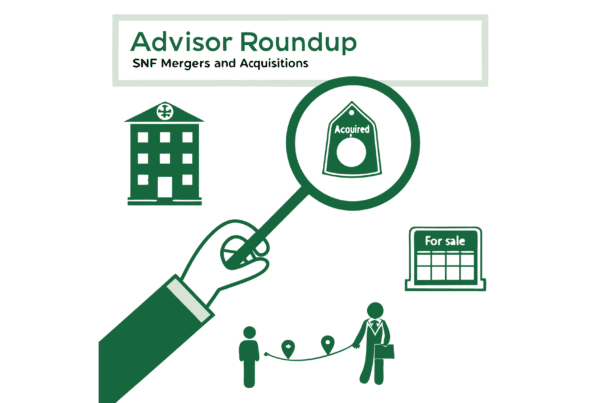For owners of hospice care practices in Hawaii, the decision to sell is one of the most significant in their professional lives. The current market presents a unique landscape of opportunity and complexity. Success requires more than just finding a buyer; it demands an understanding of your practice’s true value, the specific market dynamics in Hawaii, and strategic preparation to navigate the process. This guide provides the initial insights you need to begin that journey.
Not sure if selling is right for you? Our advisors can help you understand your options without any pressure.
Market Overview
The market for hospice care in Hawaii is strong and growing. As an owner, you are part of a vital sector. The broader Home Care Providers industry in the state is projected to reach nearly $470 million by 2025. This growth is supported by real demand. In 2022, hospice utilization among Medicare decedents in Hawaii stood at almost 44%, with total Medicare spending on this care eclipsing $88 million annually. These are not just numbers. They paint a clear picture of a stable, valued, and expanding healthcare segment. For a practice owner considering a sale, this data signals a market with significant buyer interest and a healthy appetite for well-run operations. Understanding this context is the first step in positioning your practice for a successful transition.
Key Considerations for Hawaii Hospice Owners
Beyond the balance sheet, sophisticated buyers look for specific qualities that signal a resilient and well-integrated practice. In Hawaii’s unique hospice environment, a few factors are especially important. Communicating these strengths correctly can change how a buyer sees your practice’s value.
Demonstrating a Higher Standard of Care
Buyers are interested in how your practice manages the inherent challenges of hospice care. This includes your protocols for complex symptom management, support systems for caregiver stress, and how your team navigates difficult ethical and emotional conversations. A documented, thoughtful approach is a powerful asset.
Your Community Footprint
Your practice’s connection to the local community holds real value. Involvement with initiatives like the Hawaii Hospice Collaborative or other local healthcare networks shows that your practice is not just a business, but a pillar of the community’s healthcare infrastructure.
Leveraging Progressive Policy
Hawaii is a leader in patient care, as the first state to provide Medicaid coverage for community palliative care services. If your practice has integrated these services, it represents a forward-thinking model that is attractive to buyers looking for growth and alignment with modern healthcare trends.
Your legacy and staff deserve protection during the transition to new ownership.
Market Activity
The current M&A landscape for hospice care is active. Both private equity groups and larger strategic healthcare systems are looking to expand their footprint in stable, growing markets like Hawaii. These buyers are not just looking for revenue. They are looking for well-managed practices with a clear path to future success. They pay premiums for operations that are not solely dependent on the owner, have a healthy mix of payers, and can demonstrate consistent cash flow. This activity creates a favorable environment for sellers, but it also means that buyers are more discerning. They have options. Presenting your practice professionally and running a competitive sale process is the key to attracting the best partners and achieving a premium valuation.
The Sale Process
Selling your practice is a multi-stage journey, not a single transaction. Each step has its own challenges and opportunities, and navigating them smoothly is what leads to a successful outcome. We find that a well-managed process protects you and maximizes your final value.
- Preparation and Valuation. This is the foundational step where we help you understand what your practice is truly worth. It involves analyzing your financials, normalizing expenses, and preparing a story that highlights your strengths.
- Confidential Marketing. Your sale is handled with complete discretion. We approach a curated list of qualified buyers who we know are a good fit, without alerting your staff, patients, or competitors.
- Negotiation and Structuring. We manage negotiations to secure the best possible terms, not just on price but also on post-sale roles and transition details.
- Due Diligence. This is where deals often face hurdles. We help you prepare for the buyer’s deep dive into your operations and financials, preventing surprises that could derail the sale.
- Closing and Transition. We guide you through the final legal steps and help ensure a smooth handover that protects your legacy and sets the new ownership up for success.
The due diligence process is where many practice sales encounter unexpected challenges.
Understanding Your Practice’s Valuation
Determining the value of your hospice practice is more art than science. While formulas provide a starting point, the real value is found by understanding the story behind the numbers. The core of any valuation is a figure called Adjusted EBITDA (Earnings Before Interest, Taxes, Depreciation, and Amortization). This figure represents the true earning power of your practice available to a new owner.
We often find that a practice’s true cash flow is hidden by owner-specific expenses. The goal of an adjustment is to create a clear picture. Here is a simplified example of how it works.
| Financial Item | Example Amount | Description |
|---|---|---|
| Reported Net Income | $500,000 | The starting point from your Profit and Loss statement. |
| Add: Owner’s Excess Salary | +$150,000 | The portion of owner compensation above a fair market rate. |
| Add: One-Time/Personal Expenses | +$50,000 | Costs like a family member’s car lease run through the business. |
| Adjusted EBITDA | $700,000 | The true cash flow a new owner can expect. |
This Adjusted EBITDA is then multiplied by a “multiple” based on market conditions, your practice’s size, and its unique strengths. Getting the EBITDA calculation right is the foundation of a successful sale.
A comprehensive valuation is the foundation of a successful practice transition strategy.
Planning for Life After the Sale
The moment you sign the closing documents is not the end of the journey. The structure of your sale has significant and lasting implications for your financial future, your personal role, and your legacy. It is important to plan for this from the very beginning. Key considerations include the tax impact of the sale, which can be minimized with proper structuring. You also need to define your role, if any, after the transition. Some owners want a clean break, while others prefer to stay on for a period of time, sometimes retaining a portion of the company as an “equity rollover.” This gives you a second opportunity to benefit from the practice’s future growth. Planning for these post-sale realities ensures that the transition meets not just your financial goals, but your personal ones as well.
The right exit approach depends on your personal and financial objectives.
Frequently Asked Questions
What is the current market outlook for selling a hospice care practice in Hawaii?
The market for hospice care in Hawaii is strong and growing, with the broader Home Care Providers industry projected to reach nearly $470 million by 2025. Hospice utilization among Medicare decedents is about 44%, and total Medicare spending on hospice care exceeds $88 million annually, indicating significant buyer interest.
What qualities do buyers look for in a Hawaii hospice care practice?
Buyers look for practices with a higher standard of care, including good protocols for symptom management and caregiver support, strong community connections such as involvement in local healthcare networks, and progressive policy integration like Medicaid coverage for community palliative care services.
What are the key steps in the hospice practice sale process?
Key steps include: 1) Preparation and Valuation to understand the practice’s worth; 2) Confidential Marketing to attract qualified buyers discreetly; 3) Negotiation and Structuring to secure optimal terms; 4) Due Diligence to address buyer inquiries thoroughly; and 5) Closing and Transition to finalize legalities and ensure a smooth handover.
How is the value of a hospice care practice determined?
The value is primarily based on Adjusted EBITDA (Earnings Before Interest, Taxes, Depreciation, and Amortization), which reflects true cash flow to a new owner. This figure adjusts for owner-specific expenses and is multiplied by market-based multiples considering the practice’s size and strengths.
What should owners consider for life after selling their hospice care practice?
Owners should plan for tax implications, decide their post-sale role (whether a clean break or staying on temporarily), and consider options like equity rollover to benefit from future growth. Proper exit planning helps align the sale with financial and personal goals.



